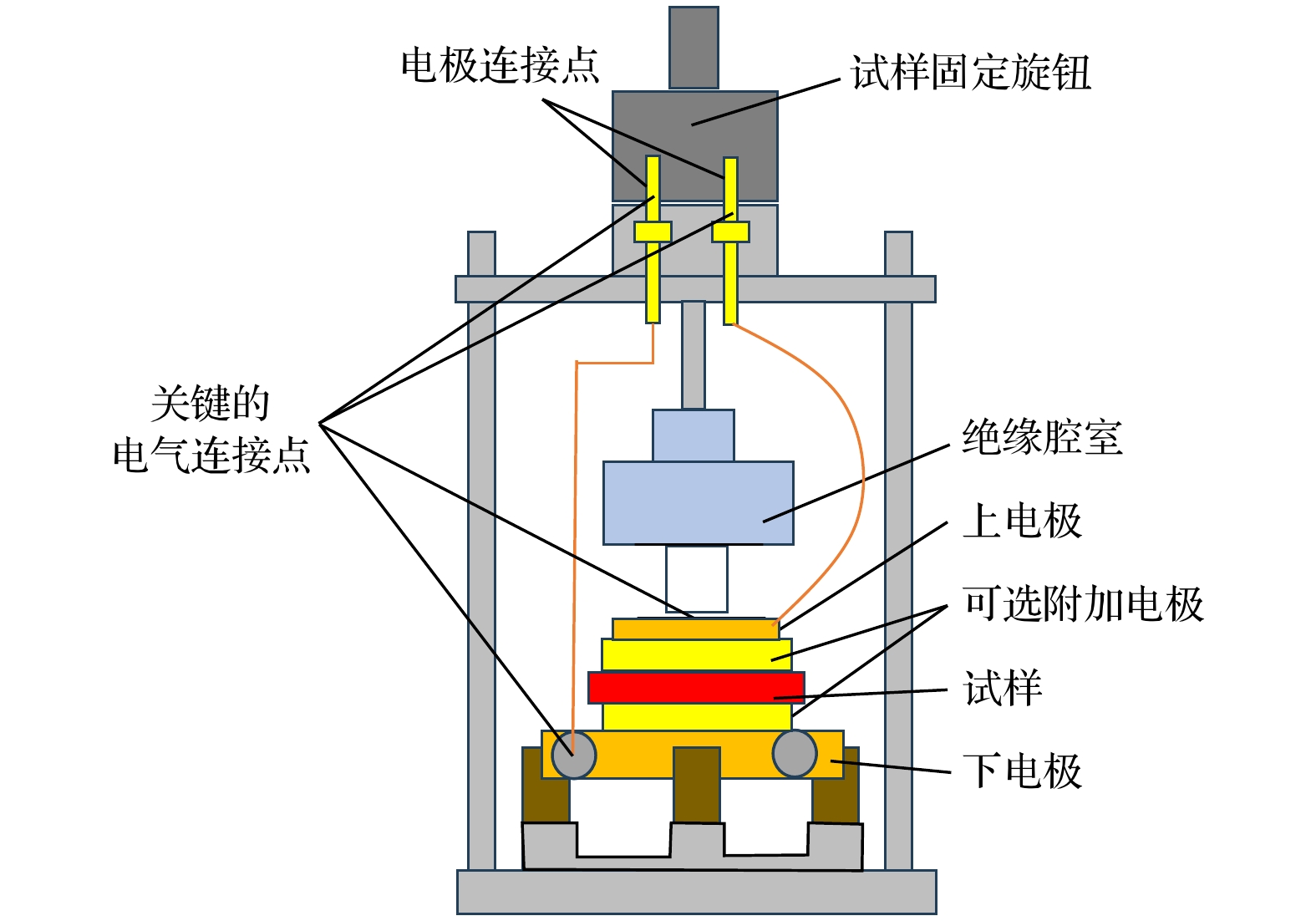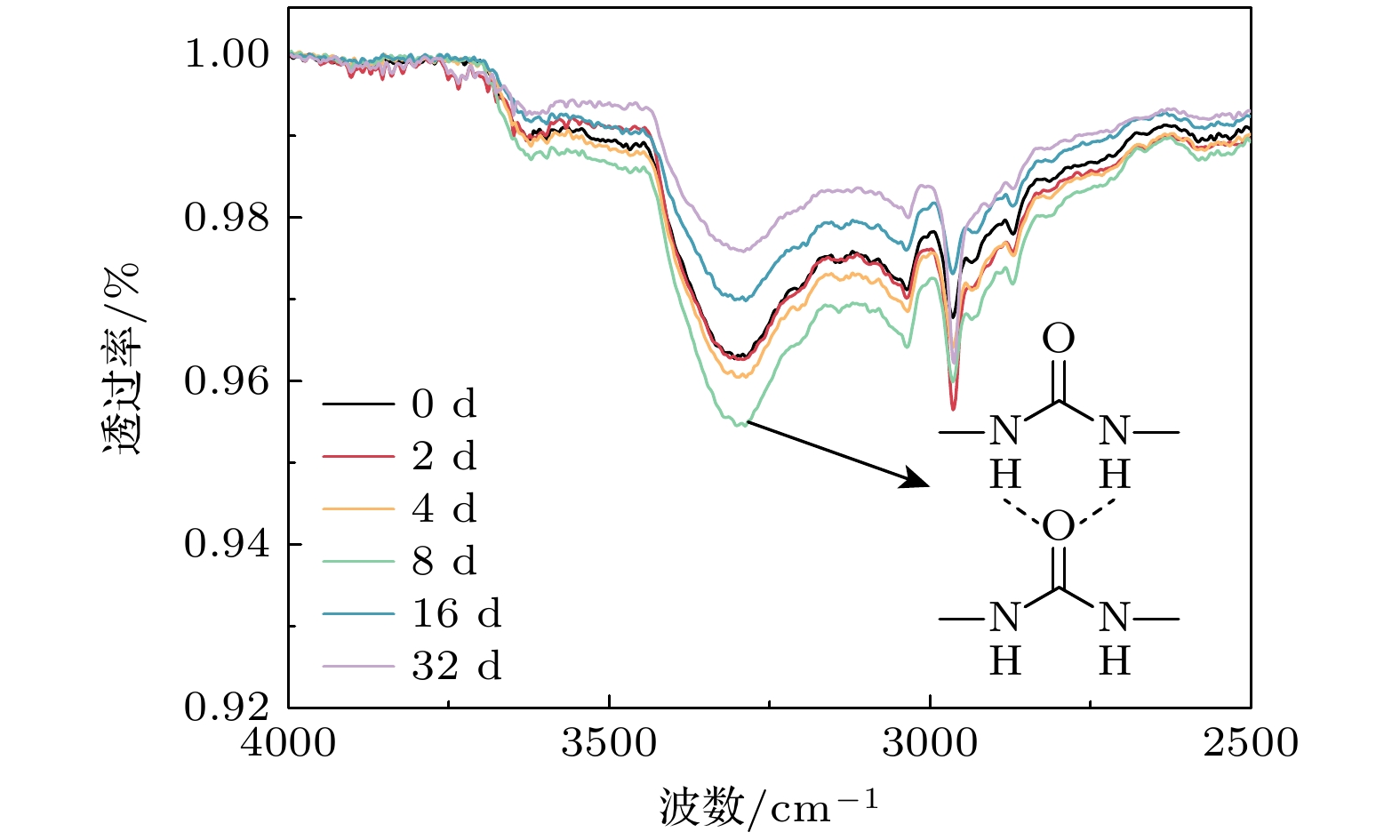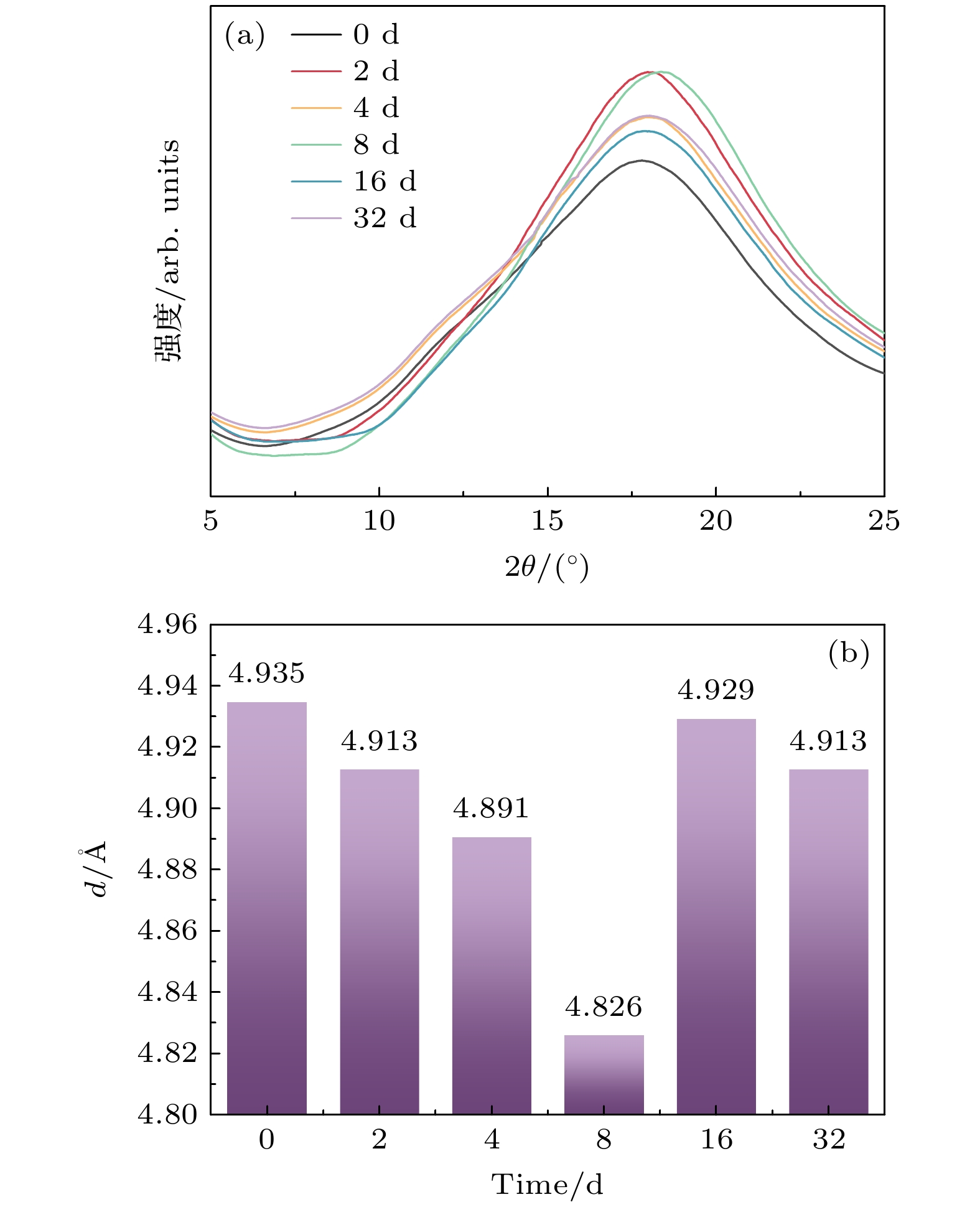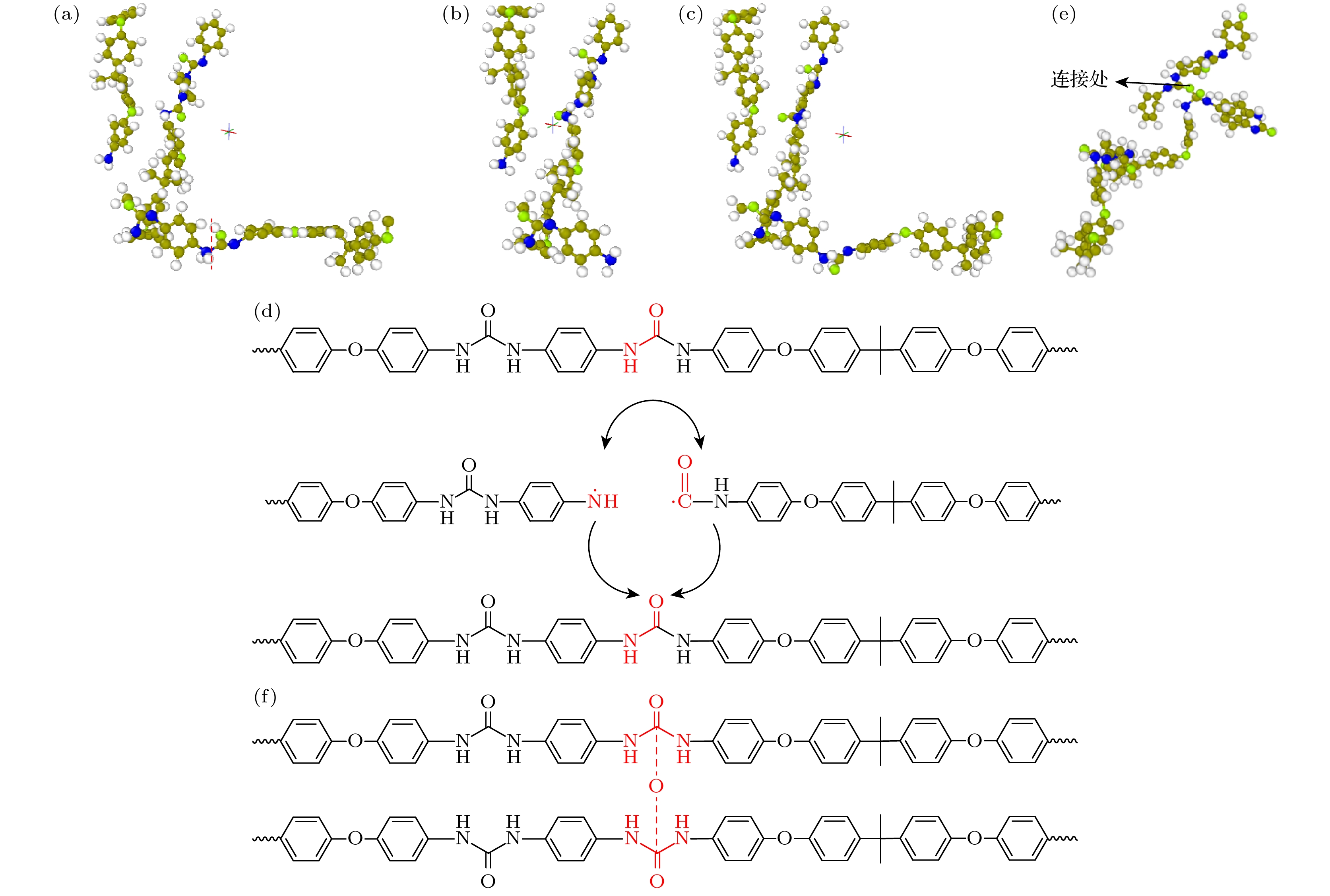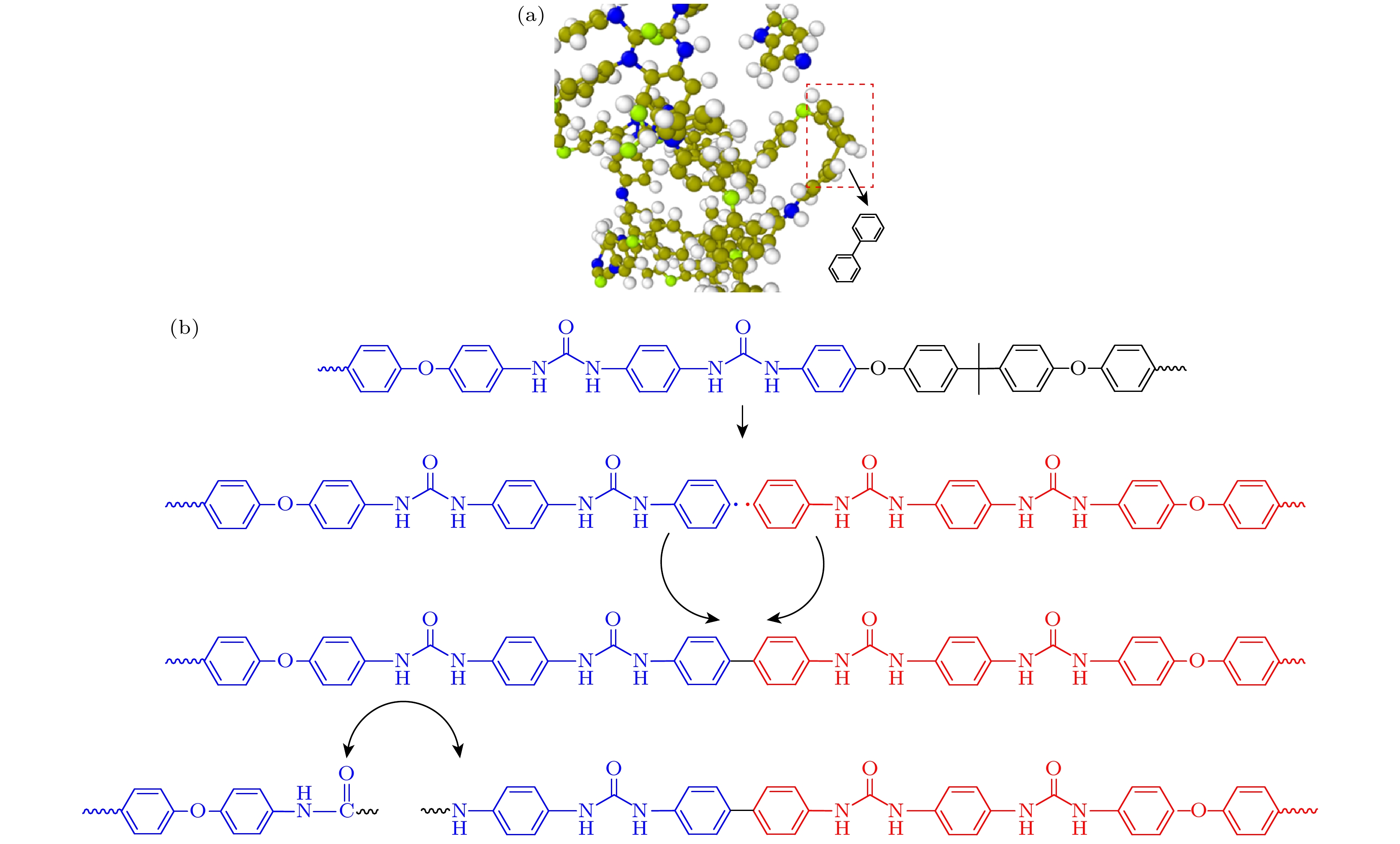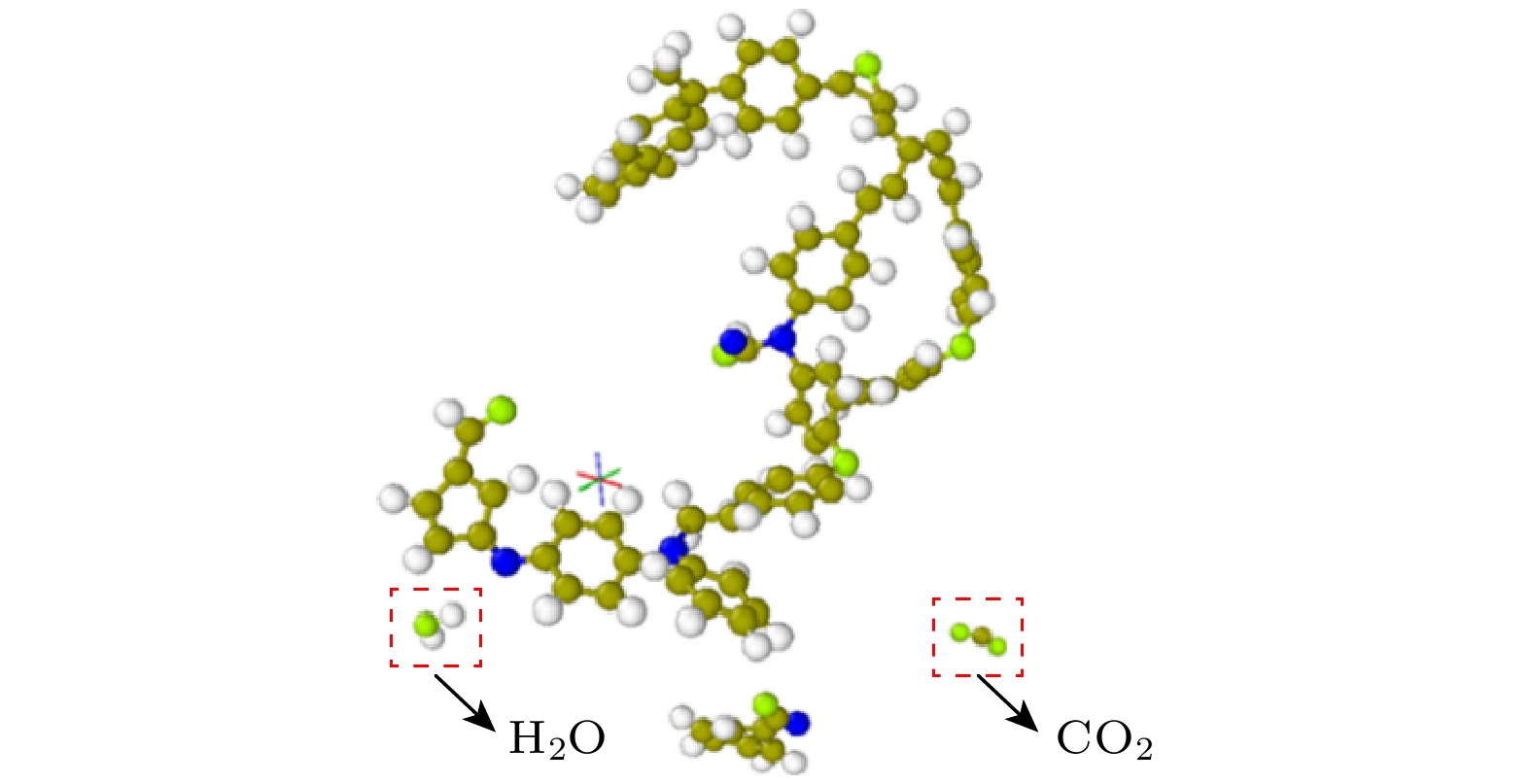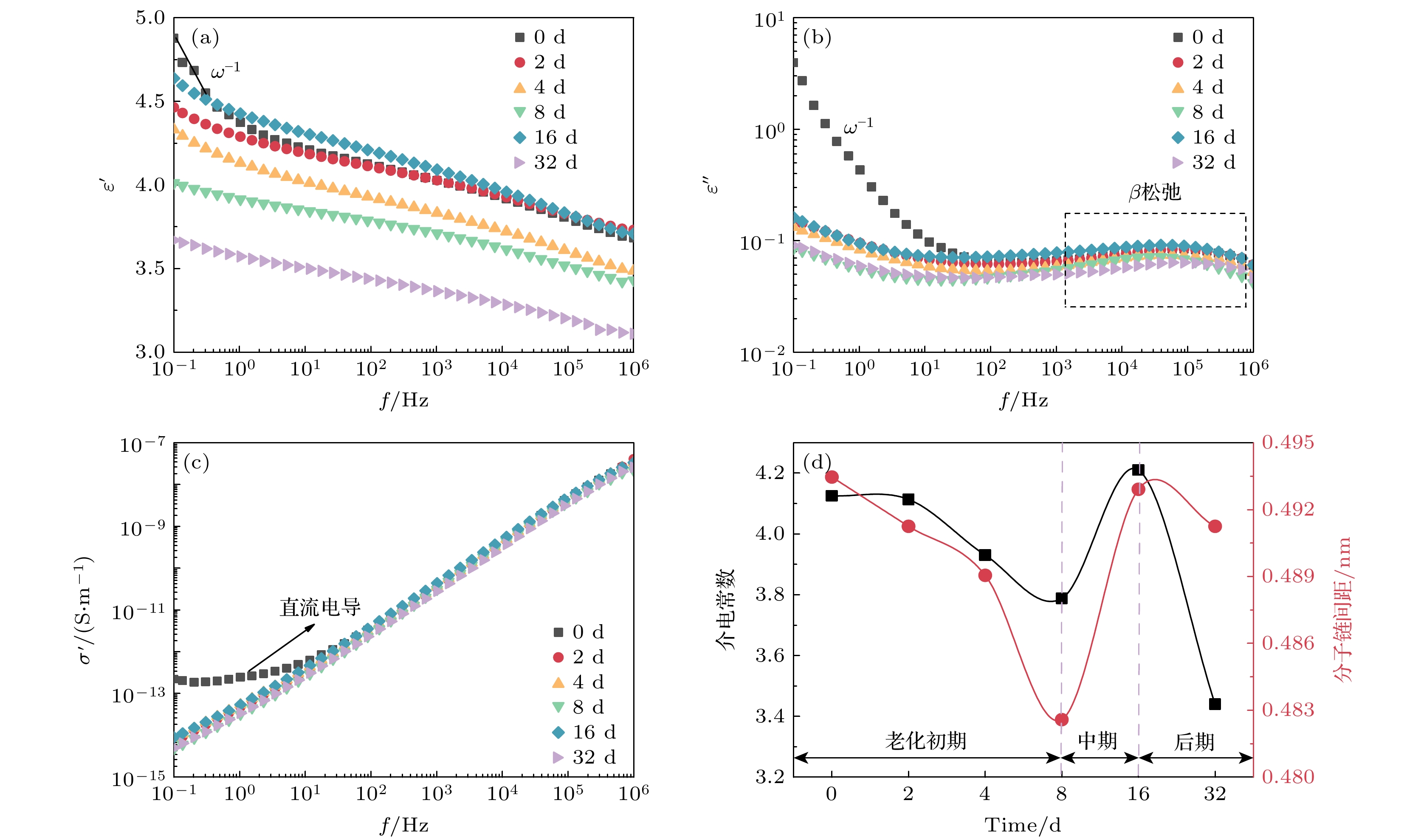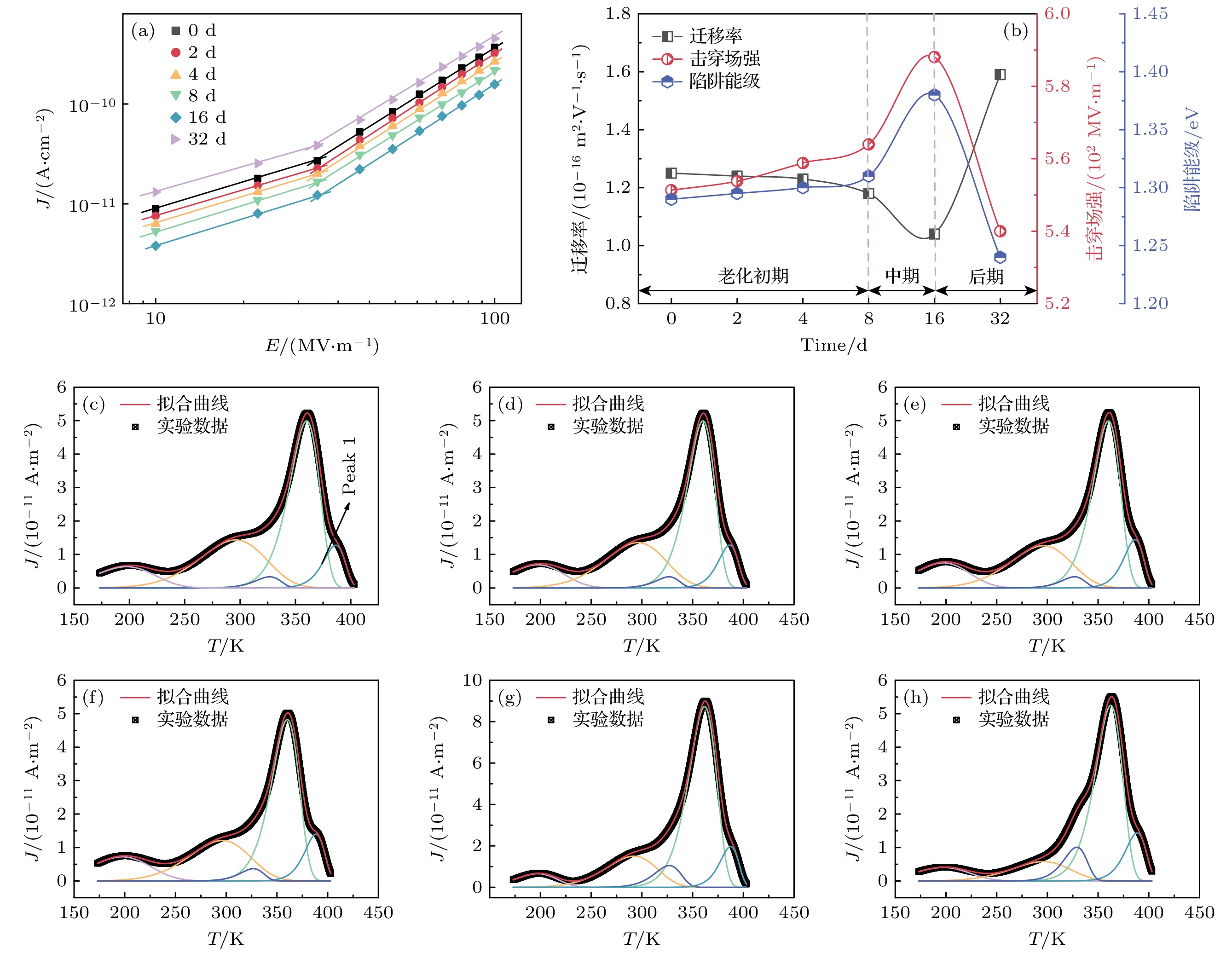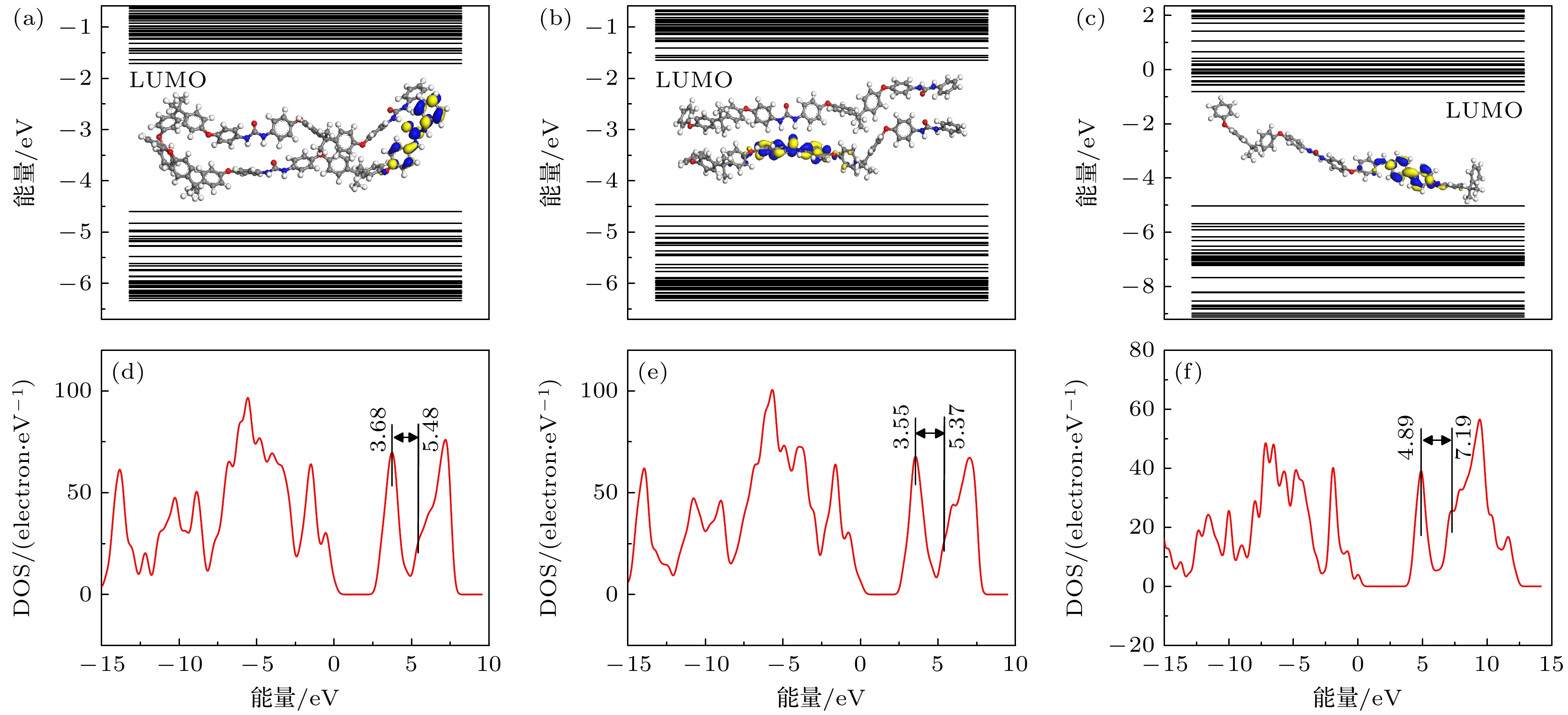-
Dielectric capacitors are essential energy storage devices with high power density. The dielectric films of capacitors will age at working temperatures, a leading their performance to degrade. Polyurea (PU) is a potential working dielectric for capacitors with high energy density and low dielectric loss. However, the aging characteristics and underlying mechanism of PU have not been discussed. Considering the operating temperature of commercial dielectric capacitors, the aging characteristics of PU are investigate by being exposed to 80 °C for different durations. Compared with dielectric constant, breakdown strength changes significantly with aging time which can be used as a characteristic parameter to evaluate the aging degree of PU. Combining experimental method and simulation method, the correlation between molecular structure, trap properties and breakdown strength during thermo-oxidative aging is studied and established. The results show that the thermal-oxidative aging of PU can be divided into three stages. In the early stage of aging, the bridging effect of oxygen promotes the order arrangement of molecular chains. In this stage, the molecular chain spacing decreases, but the H-bonding interaction between adjacent urea groups is enhanced slightly as shown in Fig. (a). As a result, the dielectric constant decreases, while the breakdown strength is almost unchanged. In the middle stage of aging, ether bonds break and inducing the formation of biphenyl structures and resulting in a disordered structure as illustrated in Fig. (b). The enhanced mobility effect increases the dielectric constant. Meanwhile, the biphenyl structures deepen the trap depth, resulting in the decrease of carrier mobility and the increase of the breakdown strength. In the late stage of aging, oxygen promotes the decomposition of urea groups, thereby reducing the number of urea groups that form deep traps. At the same time, the main chain undergoes breakage, releasing small molecules such as CO2 and H2O, which is shown in Fig. (c). These factors collectively lead to a significant reduction in the breakdown strength of PU. In addition, the variations of dielectric constant, breakdown strength and energy density in the three stages are summarized in Fig. (d).
-
Keywords:
- polyurea /
- energy storage characteristics /
- thermal-oxidative aging /
- degradation mechanism
[1] Zhang H, Wei T, Zhang Q, Ma W, Fan P, Salamon D, Zhang S T, Nan B, Tan H, Ye Z G 2020 J. Mater. Chem. C 8 16648
 Google Scholar
Google Scholar
[2] Palneedi H, Peddigari M, Hwang G T, Jeong D Y, Ryu J 2018 Adv. Funct. Mater. 28 1803665
 Google Scholar
Google Scholar
[3] Ren W B, Pan J Y, Dan Z K, Zhang T, Jiang J Y, Fan M Z, Hu P H, Li M, Lin Y H, Nan C W, Shen Y 2021 Chem. Eng. J. 420 127614
 Google Scholar
Google Scholar
[4] 李吉超, 王春雷, 钟维烈, 薛旭艳, 王渊旭 2002 51 776
 Google Scholar
Google Scholar
Li J C, Wang C L, Zhong W L, Xue X Y, Wang Y X 2002 Acta Phys. Sin. 51 776
 Google Scholar
Google Scholar
[5] 董久锋, 邓星磊, 牛玉娟, 潘子钊, 汪宏 2020 69 217701
 Google Scholar
Google Scholar
Dong J F, Deng X L, Niu Y J, Pan Z Z, Wang H 2020 Acta Phys. Sin. 69 217701
 Google Scholar
Google Scholar
[6] Wang Q, Wu C, Gao Y F, Liu S M, Liu S Q, Zuo Z, Liang X D 2022 High Voltage 7 1123
 Google Scholar
Google Scholar
[7] 叶润峰, 裴家耀, 郑明胜, 党智敏 2020 电工技术学报 35 3529
 Google Scholar
Google Scholar
Ye R F, Pei J Y, Zheng M S, Dang Z M 2020 Trans. Chin. Electrotech. Soc. 35 3529
 Google Scholar
Google Scholar
[8] Jiang X W, Wang S H, Wang W H, Han R 2021 J. Electron. Mater. 50 2400
 Google Scholar
Google Scholar
[9] 李奕萱 2021 硕士学位论文 (成都: 西南交通大学)
Li Y X 2021 M. S. Thesis (Chengdu: Southwest Jiaotong University
[10] Wang Y, Zhou X, Lin M R, Lu S G, Lin J H, Furman E, Zhang Q M 2010 IEEE Trans. Dielectr. Electr. Insul. 17 28
 Google Scholar
Google Scholar
[11] Wang Y, Zhou X, Lin M R, Zhang Q M 2009 Appl. Phys. Lett. 94 202905
 Google Scholar
Google Scholar
[12] Feng Y, Jiang L H, Yang A Q, Liu X, Yang L Q, Lu G H, Li S T 2022 Macromol. Rapid Commun. 43 2100700
 Google Scholar
Google Scholar
[13] Wu S, Lin MR, Burlingame Q, Zhang Q M 2014 Appl. Phys. Lett. 104 072903
 Google Scholar
Google Scholar
[14] Zhao Z H, Zhang S, Li M R, Feng Y, Yang L Q, Li S T 2024 J. Appl. Phys. 135 194103
 Google Scholar
Google Scholar
[15] Hattori T, Takahashi Y, Iijima M, Fukada E 1996 9th International Symposium on Electrets (ISE 9) Shanghai, China, September 25–30, 1996 p819
[16] Zhao Z H, Feng Y, Yang L Q, Zhang S, Liu X, Zhang Y, Li M R, Li S T 2023 Appl. Phys. Lett. 123 232901
 Google Scholar
Google Scholar
[17] Wu Y J, Zhao H, Zhang N, Wang H Q, Zhang C Y, Yin L, Bai J B 2024 J. Mater. Chem. C 12 2993
 Google Scholar
Google Scholar
[18] Zhu X D, Chen W X, Pan M, Zhou X, Zhang Y, Dong L J 2024 ACS Appl. Polym. Mater. 6 4808
 Google Scholar
Google Scholar
[19] Feng Y, Yang L Q, Qu G H, Suga T, Nishide H, Chen G G, Li S T 2020 Macromol. Rapid Commun. 41 2000167
 Google Scholar
Google Scholar
[20] Zhou Y, Yuan C, Wang S J, Zhu Y J, Cheng S, Yang X, Yang Y, Hu J, He J L, Li Q 2020 Energy Storage Mater. 28 255
 Google Scholar
Google Scholar
[21] Hu J, Zhao X C, Xie J H, Liu Y, Sun S L 2022 J. Polym. Res. 29 182
 Google Scholar
Google Scholar
[22] 张家阳,苏安双,徐丽丽,吴志琴,李兆宇,郑健 2021 水利科学与寒区工程 4 1
Zhang J Y, Su A S, Xu L L, Wu Z Q, Li Z Y, Zheng J 2021 Hydro Science and Cold Zone Engineering 4 1
[23] 沙光荣, 来冰冰, 赵启龙, 孙一平, 王晓波, 娄文静, 刘晓玲 2024 摩擦学学报 44 1074
 Google Scholar
Google Scholar
Sha G R, Lai B B, Zhao Q L, Sun Y P, Wang X B, Lou W J, Liu X L 2024 Tribology 44 1074
 Google Scholar
Google Scholar
[24] 鲁旭, 韩帅, 李庆民, 黄旭炜, 王学磊, 王高勇 2016 电工技术学报 31 14
 Google Scholar
Google Scholar
Lu X, Han S, Li Q M, Huang X W, Wang X L, Wang G Y 2016 Trans. Chin. Electrotech Soc. 31 14
 Google Scholar
Google Scholar
[25] Xiong J, Fan X, Long D J, Zhu B F, Zhang X, Lu J Y, Xie Y C, Zhang Z C 2022 J. Mater. Chem. A 10 24611
 Google Scholar
Google Scholar
[26] 张传升, 章程, 任成燕, 黄邦斗, 邢照亮, 邵涛 2024 电工技术学报 39 2193
 Google Scholar
Google Scholar
Zhang C S, Zhang C, Ren C Y, Huang B D, Xing Z L, Shao T 2024 Trans. Chin. Electrotech. Soc. 39 2193
 Google Scholar
Google Scholar
[27] Li J L, Wang S J, Zhu Y J, Luo Z, Zhang Y R, Shao Q, Quan H, Wang M T, Hu S X, Yang M C, Fu J, Wang R Hu J, Yuan H, He J L, Li Q 2023 J. Mater. Chem. A 11 10659
 Google Scholar
Google Scholar
[28] Yanagisawa Y, Nan Y, Okuro K, Aida T 2018 Science 359 72
 Google Scholar
Google Scholar
[29] Sebastian N, Contal C, Sanchez-Ferrer A Pieruccini M 2018 Soft. Matter. 14 7839
 Google Scholar
Google Scholar
[30] Dong R, Ranjan V, Nardelli M B Bernholc J 2015 Phys. Rev. B 92 024203
 Google Scholar
Google Scholar
[31] 冯阳, 渠广昊, 李盛涛 2024 高电压技术 50 2363
 Google Scholar
Google Scholar
Feng Y, Qu G H, Li S T 2024 High Voltage Eng. 50 2363
 Google Scholar
Google Scholar
[32] Jiang L H, Liu X, Hu S C, Li M R, Yang L Q, Feng Y, Li S T 2024 Macromol. Rapid. Commun. 45 2300501
 Google Scholar
Google Scholar
[33] 冯阳, 渠广昊, 李盛涛 2024 中国电机工程学报 44 3360
 Google Scholar
Google Scholar
Feng Y, Qu G H, Li S T 2024 Proc. CSEE 44 3360
 Google Scholar
Google Scholar
-
图 5 脲基中C—N键 (a)断裂前; (b)断裂时; (c)断裂后重新连接; (d)动态变化示意图; (e)氧气桥接作用; (f)示意图(OVITO可视化图像中的原子: 氢原子、氧原子、碳原子和氮原子分别用白色、绿色、金色和蓝色球体表示)
Figure 5. C—N bonds in the urea group: (a) Before breakage; (b) during breakage; (c) reconnection after breakage; (d) schematic representation of the dynamics; (e) oxygen bridging; (f) schematic diagrams (atoms in the OVITO visualization image: hydrogen, oxygen, carbon and nitrogen atoms are represented by white, green, gold and blue spheres, respectively).
图 10 (a)高场电导; (b)载流子迁移率、击穿强度和深陷阱能级的关系图; TSDC曲线(其中图(c), (d), (e), (f), (g), (h)分别对应0, 2, 4, 8, 16, 32 d)
Figure 10. (a) High-field conductance; (b) plot of carrier mobility, breakdown strength and deep trap energy levels; TSDC curves (where (c), (d), (e), (f), (g), and (h) correspond to 0, 2, 4, 8, 16, and 32 days, respectively).
-
[1] Zhang H, Wei T, Zhang Q, Ma W, Fan P, Salamon D, Zhang S T, Nan B, Tan H, Ye Z G 2020 J. Mater. Chem. C 8 16648
 Google Scholar
Google Scholar
[2] Palneedi H, Peddigari M, Hwang G T, Jeong D Y, Ryu J 2018 Adv. Funct. Mater. 28 1803665
 Google Scholar
Google Scholar
[3] Ren W B, Pan J Y, Dan Z K, Zhang T, Jiang J Y, Fan M Z, Hu P H, Li M, Lin Y H, Nan C W, Shen Y 2021 Chem. Eng. J. 420 127614
 Google Scholar
Google Scholar
[4] 李吉超, 王春雷, 钟维烈, 薛旭艳, 王渊旭 2002 51 776
 Google Scholar
Google Scholar
Li J C, Wang C L, Zhong W L, Xue X Y, Wang Y X 2002 Acta Phys. Sin. 51 776
 Google Scholar
Google Scholar
[5] 董久锋, 邓星磊, 牛玉娟, 潘子钊, 汪宏 2020 69 217701
 Google Scholar
Google Scholar
Dong J F, Deng X L, Niu Y J, Pan Z Z, Wang H 2020 Acta Phys. Sin. 69 217701
 Google Scholar
Google Scholar
[6] Wang Q, Wu C, Gao Y F, Liu S M, Liu S Q, Zuo Z, Liang X D 2022 High Voltage 7 1123
 Google Scholar
Google Scholar
[7] 叶润峰, 裴家耀, 郑明胜, 党智敏 2020 电工技术学报 35 3529
 Google Scholar
Google Scholar
Ye R F, Pei J Y, Zheng M S, Dang Z M 2020 Trans. Chin. Electrotech. Soc. 35 3529
 Google Scholar
Google Scholar
[8] Jiang X W, Wang S H, Wang W H, Han R 2021 J. Electron. Mater. 50 2400
 Google Scholar
Google Scholar
[9] 李奕萱 2021 硕士学位论文 (成都: 西南交通大学)
Li Y X 2021 M. S. Thesis (Chengdu: Southwest Jiaotong University
[10] Wang Y, Zhou X, Lin M R, Lu S G, Lin J H, Furman E, Zhang Q M 2010 IEEE Trans. Dielectr. Electr. Insul. 17 28
 Google Scholar
Google Scholar
[11] Wang Y, Zhou X, Lin M R, Zhang Q M 2009 Appl. Phys. Lett. 94 202905
 Google Scholar
Google Scholar
[12] Feng Y, Jiang L H, Yang A Q, Liu X, Yang L Q, Lu G H, Li S T 2022 Macromol. Rapid Commun. 43 2100700
 Google Scholar
Google Scholar
[13] Wu S, Lin MR, Burlingame Q, Zhang Q M 2014 Appl. Phys. Lett. 104 072903
 Google Scholar
Google Scholar
[14] Zhao Z H, Zhang S, Li M R, Feng Y, Yang L Q, Li S T 2024 J. Appl. Phys. 135 194103
 Google Scholar
Google Scholar
[15] Hattori T, Takahashi Y, Iijima M, Fukada E 1996 9th International Symposium on Electrets (ISE 9) Shanghai, China, September 25–30, 1996 p819
[16] Zhao Z H, Feng Y, Yang L Q, Zhang S, Liu X, Zhang Y, Li M R, Li S T 2023 Appl. Phys. Lett. 123 232901
 Google Scholar
Google Scholar
[17] Wu Y J, Zhao H, Zhang N, Wang H Q, Zhang C Y, Yin L, Bai J B 2024 J. Mater. Chem. C 12 2993
 Google Scholar
Google Scholar
[18] Zhu X D, Chen W X, Pan M, Zhou X, Zhang Y, Dong L J 2024 ACS Appl. Polym. Mater. 6 4808
 Google Scholar
Google Scholar
[19] Feng Y, Yang L Q, Qu G H, Suga T, Nishide H, Chen G G, Li S T 2020 Macromol. Rapid Commun. 41 2000167
 Google Scholar
Google Scholar
[20] Zhou Y, Yuan C, Wang S J, Zhu Y J, Cheng S, Yang X, Yang Y, Hu J, He J L, Li Q 2020 Energy Storage Mater. 28 255
 Google Scholar
Google Scholar
[21] Hu J, Zhao X C, Xie J H, Liu Y, Sun S L 2022 J. Polym. Res. 29 182
 Google Scholar
Google Scholar
[22] 张家阳,苏安双,徐丽丽,吴志琴,李兆宇,郑健 2021 水利科学与寒区工程 4 1
Zhang J Y, Su A S, Xu L L, Wu Z Q, Li Z Y, Zheng J 2021 Hydro Science and Cold Zone Engineering 4 1
[23] 沙光荣, 来冰冰, 赵启龙, 孙一平, 王晓波, 娄文静, 刘晓玲 2024 摩擦学学报 44 1074
 Google Scholar
Google Scholar
Sha G R, Lai B B, Zhao Q L, Sun Y P, Wang X B, Lou W J, Liu X L 2024 Tribology 44 1074
 Google Scholar
Google Scholar
[24] 鲁旭, 韩帅, 李庆民, 黄旭炜, 王学磊, 王高勇 2016 电工技术学报 31 14
 Google Scholar
Google Scholar
Lu X, Han S, Li Q M, Huang X W, Wang X L, Wang G Y 2016 Trans. Chin. Electrotech Soc. 31 14
 Google Scholar
Google Scholar
[25] Xiong J, Fan X, Long D J, Zhu B F, Zhang X, Lu J Y, Xie Y C, Zhang Z C 2022 J. Mater. Chem. A 10 24611
 Google Scholar
Google Scholar
[26] 张传升, 章程, 任成燕, 黄邦斗, 邢照亮, 邵涛 2024 电工技术学报 39 2193
 Google Scholar
Google Scholar
Zhang C S, Zhang C, Ren C Y, Huang B D, Xing Z L, Shao T 2024 Trans. Chin. Electrotech. Soc. 39 2193
 Google Scholar
Google Scholar
[27] Li J L, Wang S J, Zhu Y J, Luo Z, Zhang Y R, Shao Q, Quan H, Wang M T, Hu S X, Yang M C, Fu J, Wang R Hu J, Yuan H, He J L, Li Q 2023 J. Mater. Chem. A 11 10659
 Google Scholar
Google Scholar
[28] Yanagisawa Y, Nan Y, Okuro K, Aida T 2018 Science 359 72
 Google Scholar
Google Scholar
[29] Sebastian N, Contal C, Sanchez-Ferrer A Pieruccini M 2018 Soft. Matter. 14 7839
 Google Scholar
Google Scholar
[30] Dong R, Ranjan V, Nardelli M B Bernholc J 2015 Phys. Rev. B 92 024203
 Google Scholar
Google Scholar
[31] 冯阳, 渠广昊, 李盛涛 2024 高电压技术 50 2363
 Google Scholar
Google Scholar
Feng Y, Qu G H, Li S T 2024 High Voltage Eng. 50 2363
 Google Scholar
Google Scholar
[32] Jiang L H, Liu X, Hu S C, Li M R, Yang L Q, Feng Y, Li S T 2024 Macromol. Rapid. Commun. 45 2300501
 Google Scholar
Google Scholar
[33] 冯阳, 渠广昊, 李盛涛 2024 中国电机工程学报 44 3360
 Google Scholar
Google Scholar
Feng Y, Qu G H, Li S T 2024 Proc. CSEE 44 3360
 Google Scholar
Google Scholar
Catalog
Metrics
- Abstract views: 1042
- PDF Downloads: 26
- Cited By: 0














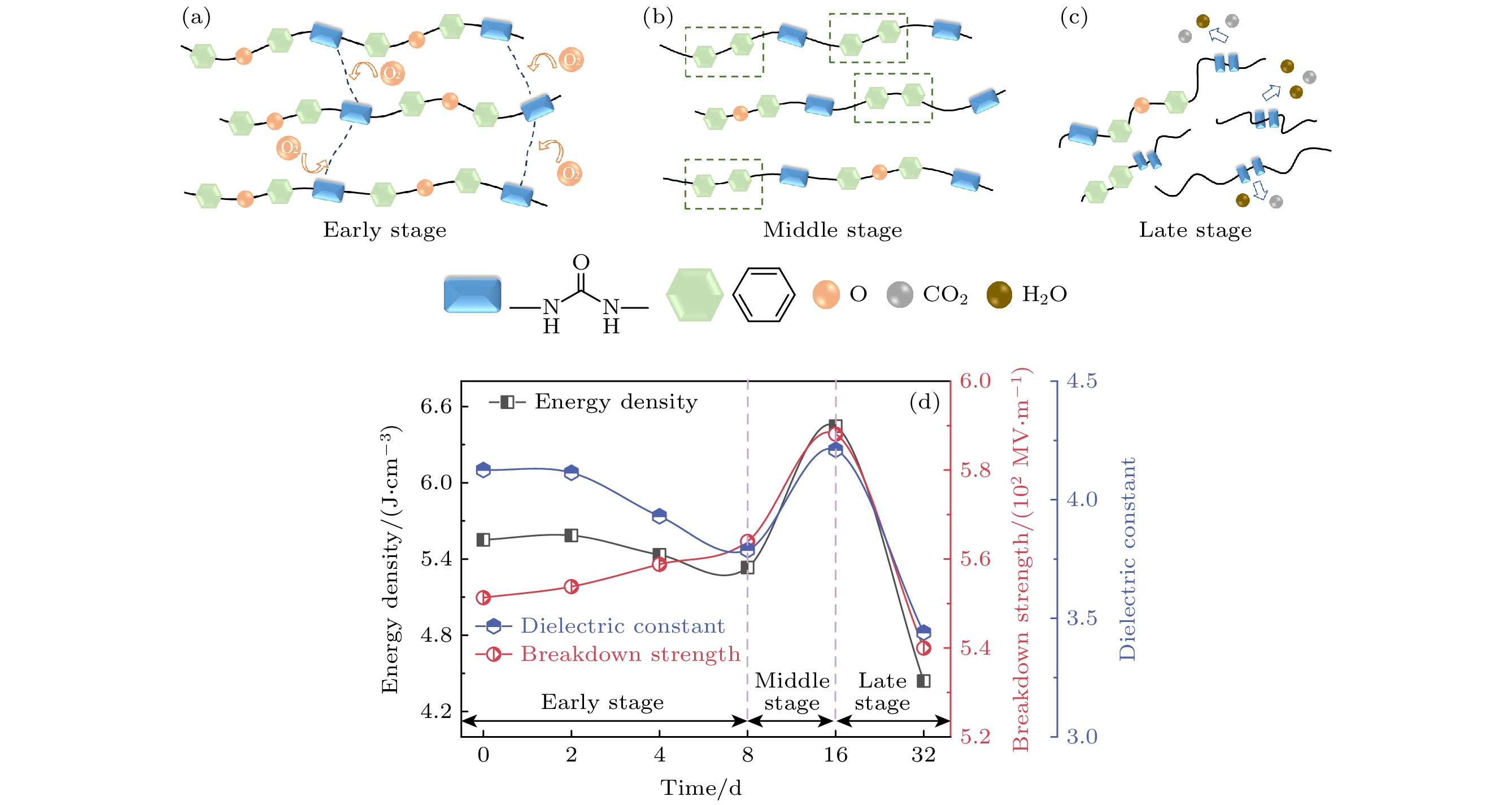
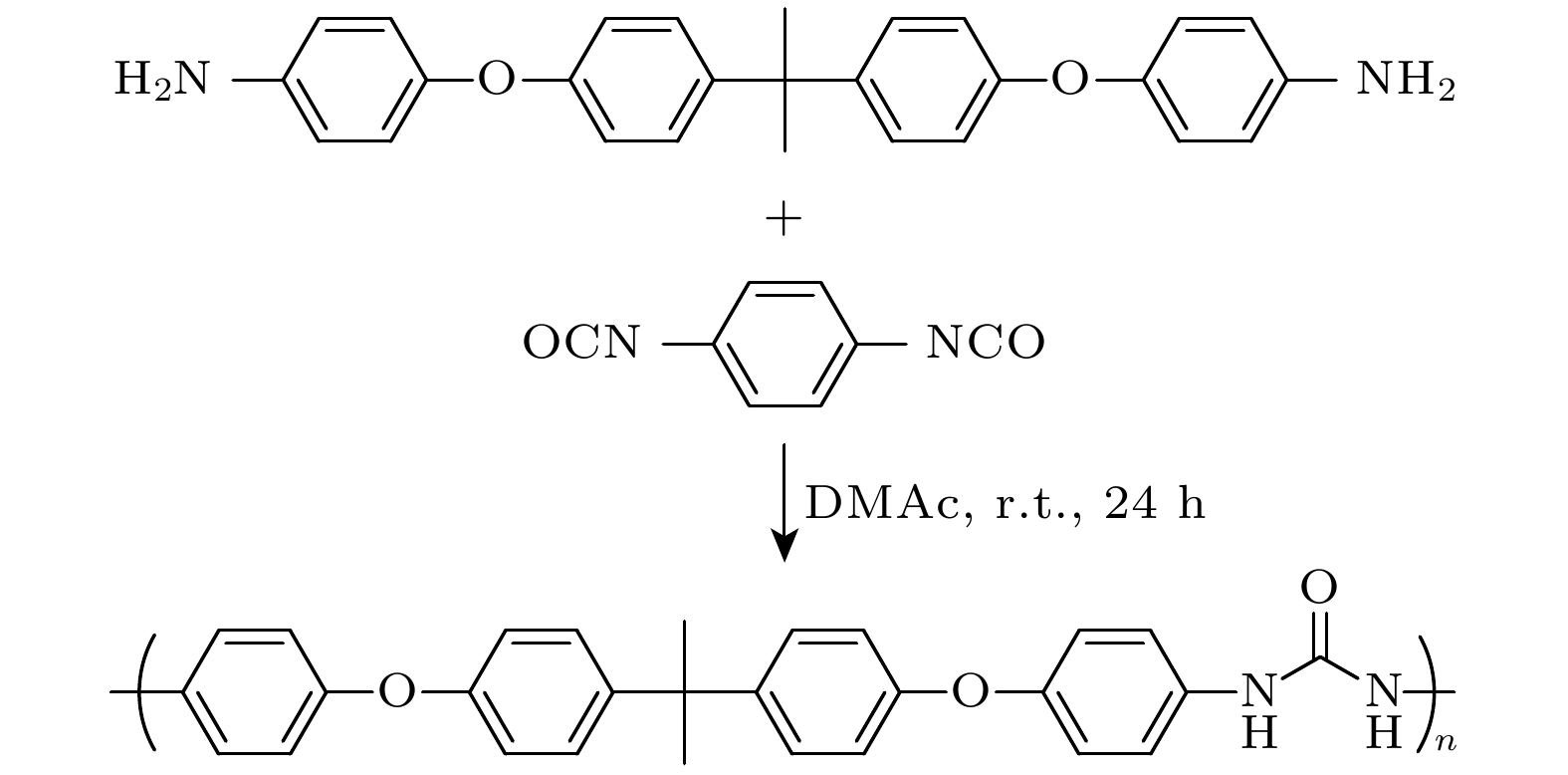
 DownLoad:
DownLoad:
